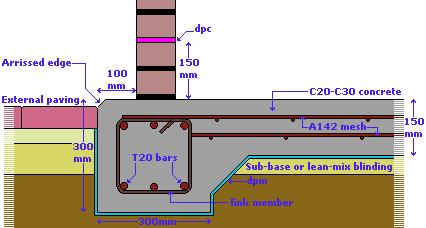Hi all,
Bit of a newbie to construction so need help deciding the best construction method.
I want to build an 8m x 8m games/lads room at the bottom of the garden. Have been looking into it for some time and recently got written confirmation that I don't need planning permission (reasons listed at end for those that are interested).
As I may spend more time there than in the main house, I want the building to be extremely well insulated and have electricity, telephone, water and drainage supplies all run from the main house.
Main house is rendred and pebbledashed but this building will be 30 metres away at the bottom of garden without any neighbouring building so no real need to harmonise.
What I can't decide is the cheapest and best way to build it. Options that I am aware of are: -
1. Concrete Block and breeze block with cavity wall insulation. Rendred and pebbledashed.
2. Timber frame and cladding and insulation in between.
3. Solid 225 mm block with battens and plasterboard with insulation in between. Possible finished with render - not exactly sure what this is but assuming it is placing the 225 blocks longways and having single skin wall.
A local bricklayer has quoted £1 per block and estimated approx 200 blocks (8 metres x 3 metres high x 4 walls) and materials cost of £1.60 per square metre.
All help appreciated.
ESA
Reasons for not requiring planning permission are: -
1. Not a residential building.
2. Building not cited closer to a public highway than main house.
Bit of a newbie to construction so need help deciding the best construction method.
I want to build an 8m x 8m games/lads room at the bottom of the garden. Have been looking into it for some time and recently got written confirmation that I don't need planning permission (reasons listed at end for those that are interested).
As I may spend more time there than in the main house, I want the building to be extremely well insulated and have electricity, telephone, water and drainage supplies all run from the main house.
Main house is rendred and pebbledashed but this building will be 30 metres away at the bottom of garden without any neighbouring building so no real need to harmonise.
What I can't decide is the cheapest and best way to build it. Options that I am aware of are: -
1. Concrete Block and breeze block with cavity wall insulation. Rendred and pebbledashed.
2. Timber frame and cladding and insulation in between.
3. Solid 225 mm block with battens and plasterboard with insulation in between. Possible finished with render - not exactly sure what this is but assuming it is placing the 225 blocks longways and having single skin wall.
A local bricklayer has quoted £1 per block and estimated approx 200 blocks (8 metres x 3 metres high x 4 walls) and materials cost of £1.60 per square metre.
All help appreciated.
ESA
Reasons for not requiring planning permission are: -
1. Not a residential building.
2. Building not cited closer to a public highway than main house.


